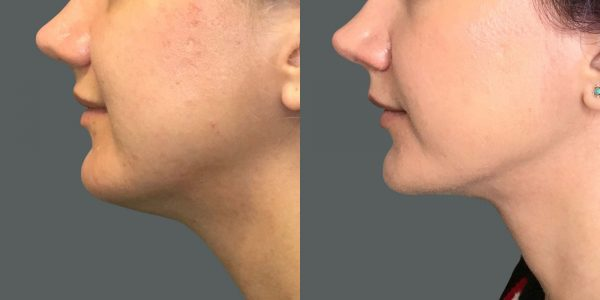Discussions
Understanding Submental Platysmaplasty
The appearance of the neck and the area beneath the chin can significantly impact one's overall facial harmony and perceived age. Concerns such as a double chin, neck bands, and ill-defined jawline are common reasons why individuals seek cosmetic improvement. While various surgical and non-surgical options exist, submental platysmaplasty stands out as a targeted surgical technique designed to specifically address these issues in the submental area – the region directly beneath the chin.
UK leading and award winning centre for plastic and aesthetic surgery, next to body and breast surgery, Dr. Kremer’s expertise is facial rejuvenation with his signature face and necklift and eyelift procedures. Dr. Kremer’s patients travel from around the world to undergo his skilled procedures.
Visit Us : Harley St. Aesthetics

Submental platysmaplasty is a surgical procedure that focuses on tightening and repositioning the platysma muscle, a superficial muscle that extends from the chest and shoulders up to the jawline and face. As we age, this muscle can weaken and sag, leading to the formation of vertical bands in the neck and contributing to a fullness or heaviness under the chin. By addressing the platysma muscle directly, submental platysmaplasty can create a smoother, more youthful, and better-defined neckline.
Why Consider Submental Platysmaplasty?
Several factors make submental platysmaplasty a valuable procedure for individuals seeking neck rejuvenation:
Addressing Platysmal Bands: The vertical bands that appear on the neck, often becoming more prominent with age and muscle contraction, are effectively treated by tightening the platysma muscle.
Improving the Jawline Definition: By reducing sagging and fullness in the submental area, the procedure can enhance the definition of the jawline, creating a more sculpted and youthful contour.
Reducing the Appearance of a Double Chin: In many cases, laxity of the platysma muscle contributes to the appearance of a double chin. Tightening this muscle can significantly improve the contour in this area.
Creating a Smoother Neck Contour: Overall, submental platysmaplasty aims to create a smoother, firmer, and more youthful appearance of the neck.
Often Performed in Conjunction with Other Procedures: While effective on its own for targeted neck rejuvenation, submental platysmaplasty is frequently performed as part of a more comprehensive facelift or neck lift to achieve harmonious results across the entire lower face and neck.
The Submental Platysmaplasty Procedure
The submental platysmaplasty procedure typically involves the following steps:
Anesthesia: The surgery is usually performed under general anesthesia or local anesthesia with sedation, depending on the extent of the procedure and the surgeon's recommendation.
Incision: Small, discreet incisions are made, typically hidden in the natural crease beneath the chin and sometimes behind the ears if combined with a more extensive neck lift.
Platysma Muscle Manipulation: Through these incisions, the surgeon will access the platysma muscle. The specific techniques used can vary depending on the individual's anatomy and the surgeon's approach. Common techniques include:
Platysmaplasty plication: The edges of the platysma muscle are tightened by stitching them together in the midline of the neck.
Platysmaplasty resection: A portion of the platysma muscle may be removed to achieve a tighter contour.
Platysma myotomy: In some cases, the platysma muscle bands may be divided (cut) to release their pull.
Liposuction (Optional): If excess fat is present in the submental area, liposuction may be performed concurrently to further refine the contour.
Skin Redraping and Closure: The skin is then redraped smoothly over the tightened muscle, and the incisions are closed with sutures.
Recovery After Submental Platysmaplasty
The recovery period following submental platysmaplasty typically involves some swelling, bruising, and discomfort in the neck and chin area. Pain medication can help manage any discomfort. Patients are usually advised to:
Keep their head elevated, especially during sleep.
Apply cold compresses to reduce swelling and bruising.
Wear a compression garment around the neck to support healing and minimize swelling.
Avoid strenuous activities for several weeks.
Follow the surgeon's specific instructions regarding wound care and activity restrictions.
The initial swelling and bruising usually subside within a few weeks, and the final results of the submental platysmaplasty will become more apparent over several months as the tissues settle and heal completely.
Who is a Good Candidate for Submental Platysmaplasty?
Ideal candidates for submental platysmaplasty are individuals who:
Are in good overall health.
Have noticeable platysmal bands or fullness under the chin.
Desire a more defined and youthful neckline.
Have realistic expectations about the outcome of the procedure.
Understand the surgical process and the recovery period.
Choosing a Qualified Surgeon
As with any surgical procedure, choosing a qualified and experienced surgeon is crucial for a successful submental platysmaplasty. Look for a board-certified plastic surgeon or facial plastic surgeon with specific expertise in facial and neck rejuvenation procedures. Reviewing before-and-after photos of previous patients and discussing your goals and concerns during a thorough consultation are essential steps in selecting the right surgeon for your needs.
In conclusion, submental platysmaplasty is a targeted surgical technique that can effectively address common signs of aging in the neck, such as platysmal bands and submental fullness. By directly manipulating the platysma muscle, this procedure can create a smoother, more defined, and more youthful neckline, often contributing significantly to overall facial rejuvenation.
